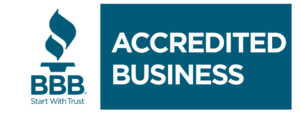Bankruptcy & Car Repossession
For many people, their car is essential to their daily life. It gets them to work, school, and other essential places. However, if you’re struggling with debt and facing bankruptcy, you may be worried about losing your car through repossession. Fortunately, bankruptcy may help you keep your car and even reduce debt.
What is Bankruptcy?
Bankruptcy is a legal process designed to help people struggling with debt. It’s a way to get a fresh financial start by wiping out some or all of your debts, depending on the type of bankruptcy you file. There are two main types of bankruptcy that individuals can file Chapter 7 and Chapter 13.
Chapter 7 Bankruptcy
Chapter 7 bankruptcy, or “liquidation” bankruptcy, involves selling off some of your assets to pay off your debts. However, certain property types are exempt from liquidation, including a certain amount of equity in your car. In Wisconsin, the car exemption is $4,000. If you own your car outright and it’s worth less than $4,000, you can keep it in a Chapter 7 bankruptcy.
Chapter 13 Bankruptcy
Chapter 13 bankruptcy, on the other hand, is a reorganization bankruptcy. It involves creating a repayment plan that lasts between three and five years. You’ll pay a bankruptcy trustee to distribute the funds to your creditors during this time. Chapter 13 can be a good option if you need to catch up on car payments and want to catch up while keeping your car.
Car Repossession
Vehicle repossession occurs when you default on your car loan, and the lender takes back the car. This can happen if you miss payments or violate the terms of your loan agreement. Sometimes, the lender can repossess your car without giving you any notice. However, most states require lenders to provide a certain amount of notice and allow you to bring your payments up to date before repossessing your car.
If your car is repossessed, the lender will sell it at auction to recoup the amount you owe on loan. If the sale price doesn’t cover the full amount you owe, you may be responsible for paying the difference, known as a “deficiency balance.” This can worsen your financial situation, as you’ll still owe money on a car you no longer have.
How Can Bankruptcy Help with Car Repossession?
If you’re facing vehicle repossession, bankruptcy can help. When you file for bankruptcy, an automatic stay goes into effect. This court order prevents creditors from taking any further collection action against you, including repossession. If your car has already been repossessed, the automatic stay can stop the lender from selling it and allow you to get it back.
You can keep your car in a Chapter 7 bankruptcy by reaffirming the debt. This involves signing a new agreement with the lender that allows you to keep the car and continue making payments. However, if you need to catch up on your car payments and can’t catch up, the lender may still be able to repossess your car, even if you’ve reaffirmed the debt.
In a Chapter 13 bankruptcy, you can include your car loan in your repayment plan. This means you’ll make regular payments to the bankruptcy trustee, who will then pay your car lender. If you make your payments on time, the lender cannot repossess your car.
Tips for Dealing with Car Repossession
If you’re struggling with debt and facing vehicle repossession, there are a few things you can do to protect yourself:
1. Communicate with your Lender: If you need help making your car payments, contact your lender as soon as possible. They may work with you to devise a repayment plan or defer your payments.
2. Know your Rights: As mentioned, most states have laws requiring lenders to provide notice and an opportunity to catch up on payments before repossessing a car. Make sure you know what your state’s laws are and what your rights are as a borrower.
3. Consider Bankruptcy:Bankruptcy may be a good option if you’re facing vehicle repossession and can’t afford to catch up on your payments. It can help you keep your car and reduce your debt.
4. Get Legal Help:If you’re facing car repossession or bankruptcy, consulting an attorney specializing in these law areas is a good idea. They can help you understand your options and make the best decision.
5. Consider Refinancing: If you have equity in your car, you can refinance your loan and lower your monthly payments. This could make it easier to keep up with your payments and avoid repossession.
6. Look into a Car Loan Modification: Some lenders may be willing to modify your car loan to make your payments more manageable. This could include extending the loan term, lowering the interest rate, or reducing the monthly payments. Be sure to ask your lender about any loan modification options that may be available to you.
If you’re struggling with debt and facing car repossession, bankruptcy can help. Several options are available, including Chapter 7 and Chapter 13 bankruptcy. By filing for bankruptcy, you can stop vehicle repossession and keep your car while reducing your debt and getting a fresh financial start. However, it’s essential to understand your options and work with an experienced attorney to make the best decision. With the proper guidance, you can get back on track and build a brighter financial future.


